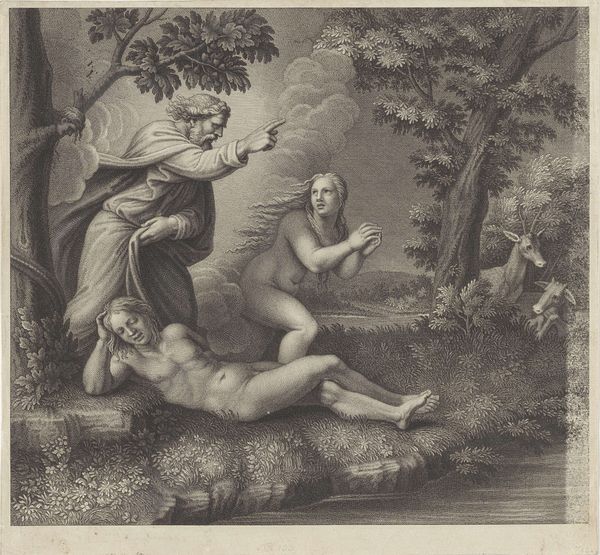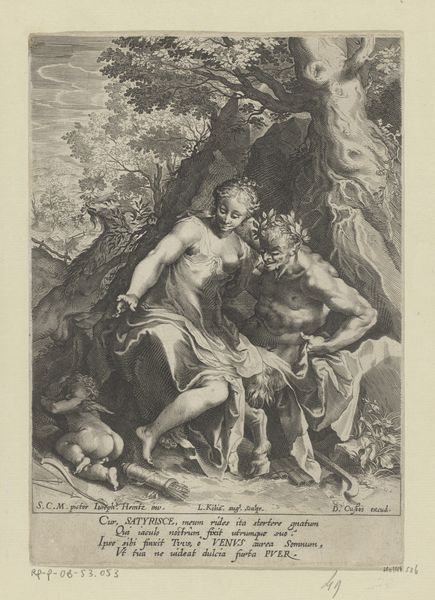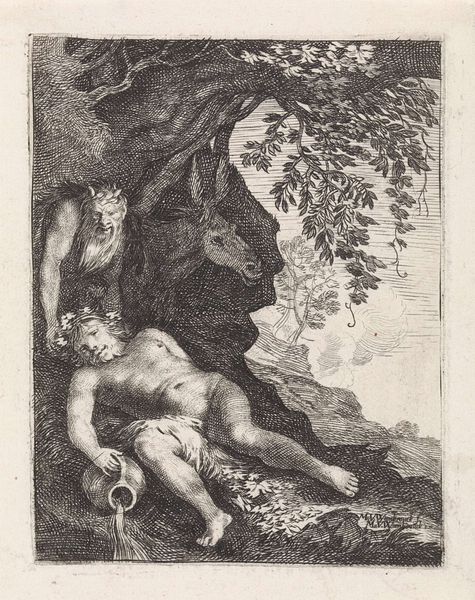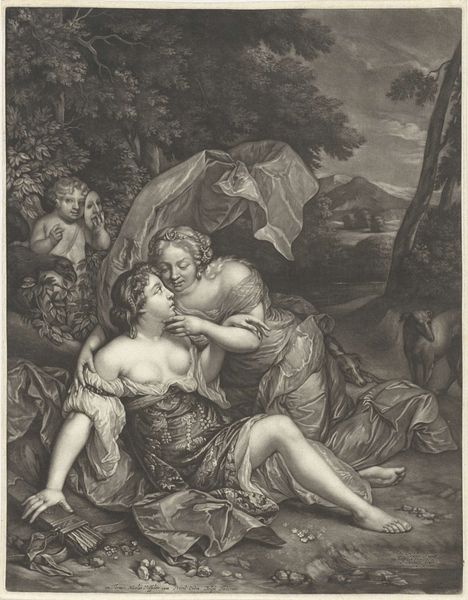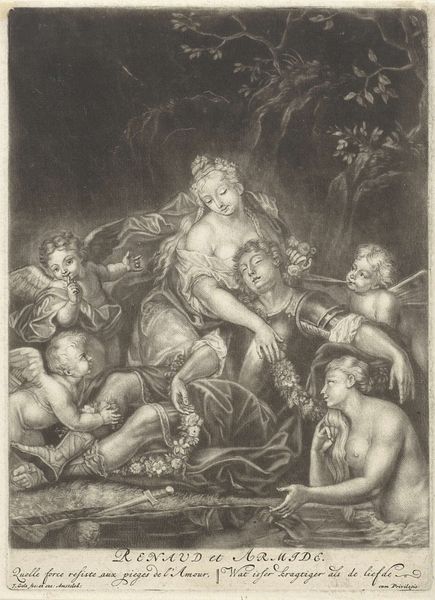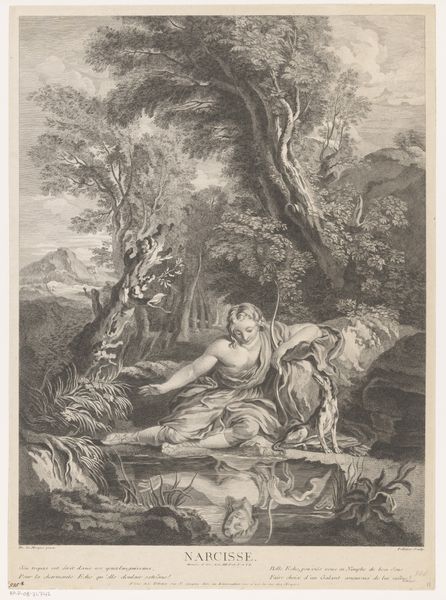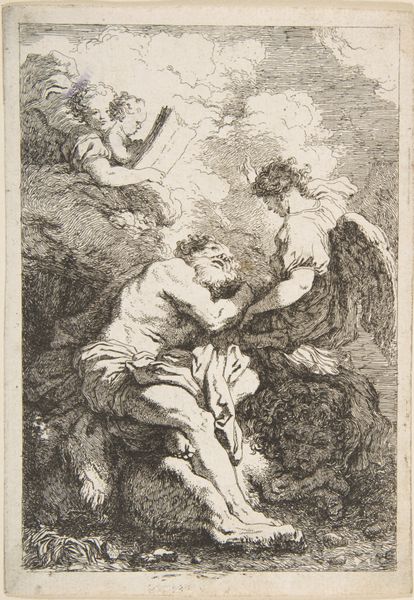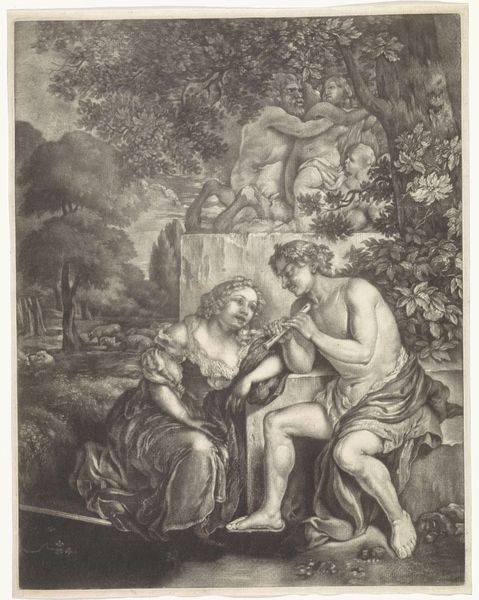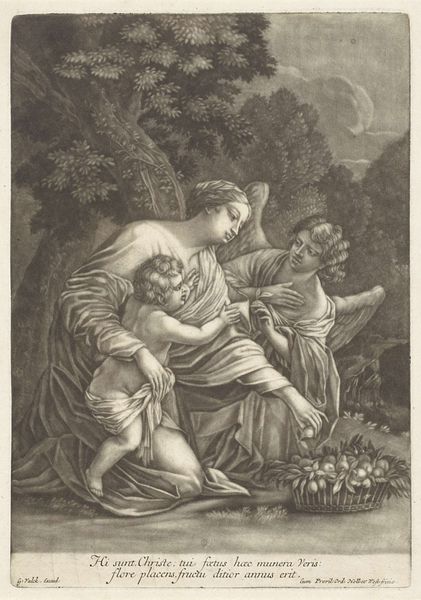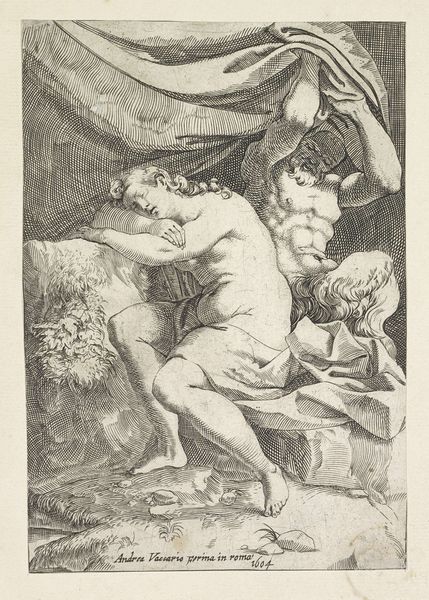
engraving
#
allegory
#
baroque
#
charcoal drawing
#
figuration
#
pencil drawing
#
history-painting
#
charcoal
#
engraving
Dimensions: height 382 mm, width 296 mm
Copyright: Rijks Museum: Open Domain
Editor: Here we have Jan Broedelet's engraving "Cephalus en Procris," created sometime between 1670 and 1700. The tragic scene is immediately striking. What can you tell us about the social and material factors influencing a work like this? Curator: Well, let's think about engraving as a reproductive technology. The lines carved into the metal plate—copper most likely, given the period—enabled the mass dissemination of images. Who controlled those lines? Whose labor produced this scene? Consider how this mediated experience of mythology might differ from, say, an original painting commissioned by an elite patron. This also presents as a high demand and popular theme within Baroque artwork. Editor: So, rather than just admiring the artistic skill, you're drawing attention to the means of production and its potential audience. Curator: Exactly! Think about the engraver's workshop: the division of labor, the apprentices learning the trade. This image circulated in a very different social world compared to the mythological dramas acted out in aristocratic courts. The engraving itself becomes a commodity, accessible to a broader public with varying degrees of purchasing power. What kind of symbolic power dynamics would this image elicit with its audience? Editor: That’s fascinating, I never really considered the social reach offered by engraving as an important factor. And to think that this allowed stories from Ovid to circulate widely in 17th-century Europe… Curator: And how does the materiality of the engraving—its lines, its size, its relative affordability—affect its value? Think about the original charcoal drawing—the medium suggests the artist’s initial ideas and vision. It really shows how different types of people engage with mythological stories through the act of making art and consuming them. Editor: I guess, now, I see it as more than just an illustration of mythology; it's an artifact shaped by the social and economic conditions of its creation. Curator: Precisely! And by considering those conditions, we can understand the true meaning and significance of a work like this.
Comments
No comments
Be the first to comment and join the conversation on the ultimate creative platform.
